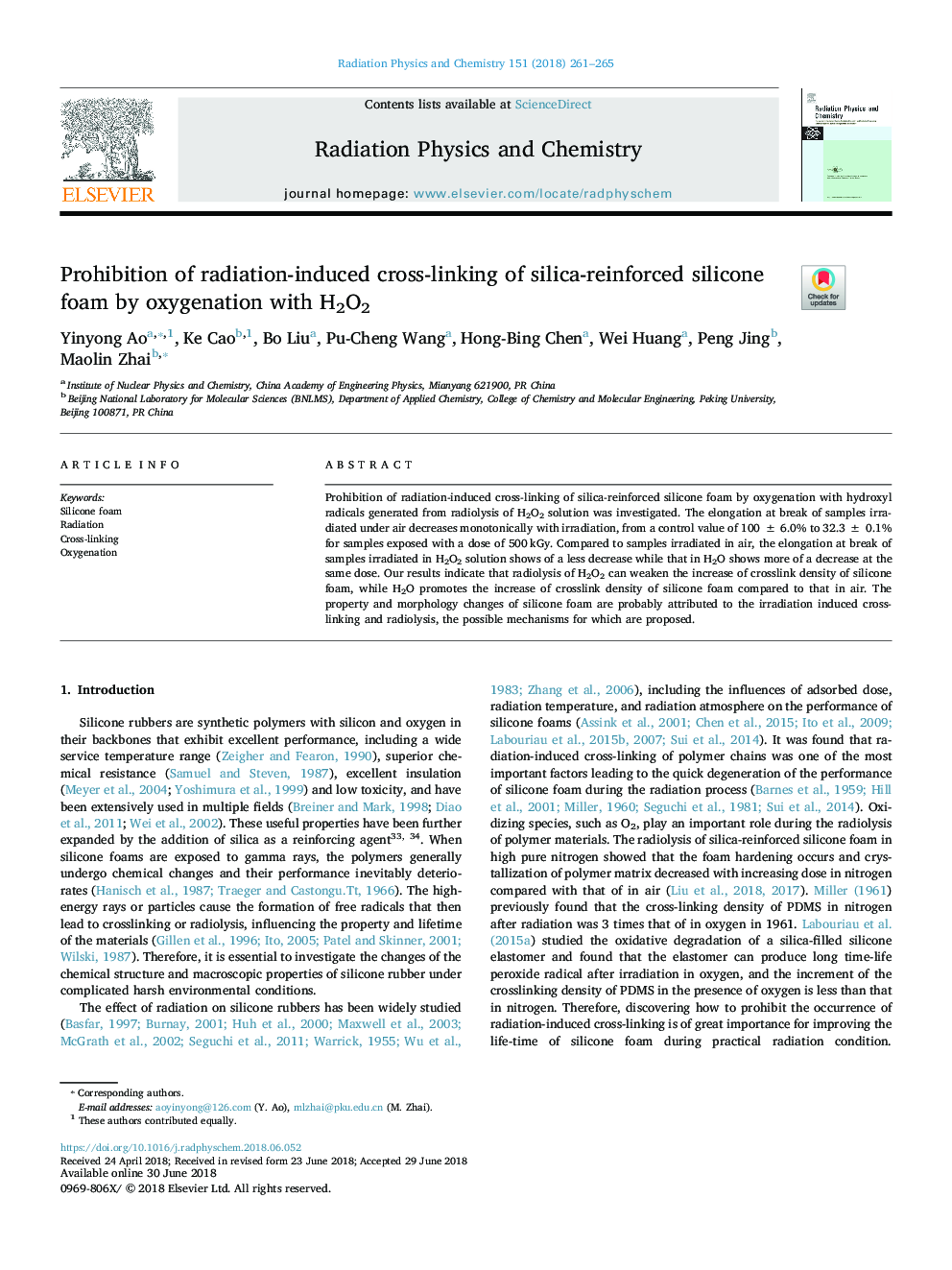| Article ID | Journal | Published Year | Pages | File Type |
|---|---|---|---|---|
| 8251328 | Radiation Physics and Chemistry | 2018 | 5 Pages |
Abstract
Prohibition of radiation-induced cross-linking of silica-reinforced silicone foam by oxygenation with hydroxyl radicals generated from radiolysis of H2O2 solution was investigated. The elongation at break of samples irradiated under air decreases monotonically with irradiation, from a control value of 100â¯Â±â¯6.0% to 32.3â¯Â±â¯0.1% for samples exposed with a dose of 500â¯kGy. Compared to samples irradiated in air, the elongation at break of samples irradiated in H2O2 solution shows of a less decrease while that in H2O shows more of a decrease at the same dose. Our results indicate that radiolysis of H2O2 can weaken the increase of crosslink density of silicone foam, while H2O promotes the increase of crosslink density of silicone foam compared to that in air. The property and morphology changes of silicone foam are probably attributed to the irradiation induced crosslinking and radiolysis, the possible mechanisms for which are proposed.
Related Topics
Physical Sciences and Engineering
Physics and Astronomy
Radiation
Authors
Yinyong Ao, Ke Cao, Bo Liu, Pu-Cheng Wang, Hong-Bing Chen, Wei Huang, Peng Jing, Maolin Zhai,
